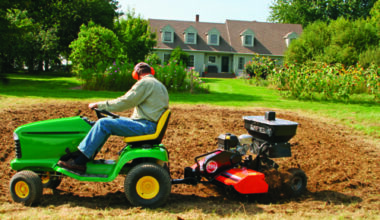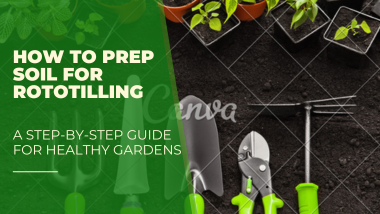Tending to seedlings brings a joyful journey of nurturing life from scratch. Yet, it’s not all blue skies and rainbows as this tender stage of growth demands careful watering practices. With their delicate roots just getting established, seedlings could easily succumb to over or under-watering.
At the heart of successful seeding is mastering how much and how often you water them. It’s like that delicate balance in a dance routine; too fast and you’ll trip up your partner (the seedling), but too slow and you risk losing rhythm altogether.
Stay tuned because what comes next will transform your fledgling gardeners into thriving plants full of vitality! Your soon-to-be lush garden eagerly awaits these invaluable tips—from identifying signs of underwatered or overwatered plants to demystifying common myths about plant hydration.
Determining the Right Time to Water Seedlings
Seedlings, being delicate and vulnerable plants, require proper care and attention from their early stages.
One crucial aspect of nurturing seedlings is providing them with the right amount of water at the right time. But how do you determine when it’s time to water your seedlings?
To properly assess whether your seedlings need watering, begin by gently touching the soil surface. If it feels dry or slightly moist, this indicates that it may be time for hydration.
However, if the soil feels excessively wet or damp, avoid watering as this can lead to overwatering and suffocating roots.
Identifying the Moisture Level of Soil
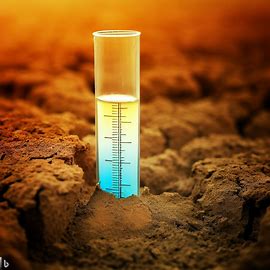
Checking soil moisture levels is pivotal in maintaining healthy seedling growth.
An effective way to judge if your seedlings need water is through a simple finger test.
Insert your index finger about an inch into the soil near a plant stem. If it comes out dry or nearly dry, start watering immediately.
Conversely, if traces of moisture cling to your finger upon removal from the soil, hold off on watering until further evaluation.
Techniques for Efficient Watering of Seedlings
Knowing how much water to give your seedlings can be challenging but following these techniques will help ensure efficient hydration:
1. Slow and gentle pouring: Avoid drenching young plants with heavy streams of water as this can displace seeds or damage fragile foliage.
Instead, use a small watering can with fine holes or consider utilizing a drip irrigation system specifically designed for tender plants.
2. Bottom-watering method: Another effective technique involves placing trays containing pots with drain holes in larger containers filled partially with water.
As gravity draws moisture upwards through capillary action, roots absorb only what they need, preventing the risk of overwatering.
Use of Spraying Tools in Watering Little Plants
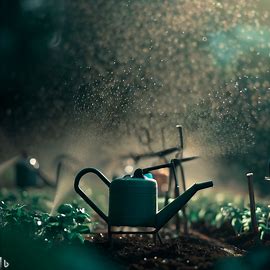
Sprayers are valuable tools for watering seedlings delicately. Here’s how to use them effectively:
1. Mist spray bottles: Fill a clean mist spray bottle with water and gently spritz the soil surface around each plant.
This method provides even hydration without disturbing the delicate root system or causing excess runoff.
2. Fine nozzle attachments: If you prefer using a hose, attach a fine nozzle to minimize water pressure and control the spraying area.
Aim the gentle flow directly at the base of each seedling, ensuring moisture reaches their roots while keeping foliage dry.
Evaluating the Environmental Factors Influencing Seedling’s Need for Water
While understanding your seedlings’ water requirements is crucial, it’s equally important to consider environmental factors that affect their hydration needs:
1. Temperature and humidity: Higher temperatures and low humidity levels contribute to quicker evaporation rates, intensifying the need for frequent watering.
Monitor these conditions closely and adjust your watering schedule accordingly to prevent stress on young plants.
2. Air circulation: Good air movement aids in reducing excess moisture lingering around leaves, minimizing fungal diseases.
Consider using fans or opening windows when growing seedlings indoors to maintain proper air circulation.
Avoidance of Overwatering and Underwatering Seedlings
Overwatering can suffocate your seedlings by depriving them of oxygen while underwatering stunts growth due to insufficient moisture intake. Follow these strategies:
1. Establish consistent watering patterns: Regularly check soil moisture levels rather than adhering strictly to fixed schedules.
Consistency prevents both under and over-watering scenarios by adapting care based on individual plant needs.
2. Proper drainage system: Ensure containers have adequate drainage holes allowing excess water to escape freely.
This prevents waterlogging and promotes healthy root growth by maintaining optimum moisture levels.
Maintaining a Balanced pH Level While Hydrating Young Plants
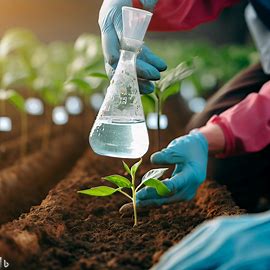
The pH level of the soil significantly impacts nutrient availability to seedlings. Consider the following tips for maintaining proper pH:
1. Test the soil: Use a simple DIY testing kit or send samples to a local agricultural extension office or professional laboratory to determine your soil’s pH level.
Based on test results, adjust acidity or alkalinity as needed using organic amendments like lime for acidic soils or sulfur for alkaline soils.
2. Quality of water: If your tap water has an unfavorable pH level, consider collecting rainwater or using filtered water with suitable acidity/alkalinity levels.
This helps maintain a balanced environment for seedlings and avoids potential nutrient deficiencies caused by extreme pH values.
Tips on How to Maintain Healthy Moisture Levels in Seed Trays
When growing multiple seedlings in trays, it is essential to ensure uniform moisture levels across all plants. Follow these tips:
1. Mulching: Apply a thin layer of organic mulch, such as straw or compost, around each seedling within the tray.
Mulching helps conserve moisture, regulates temperature fluctuations, and minimizes weed growth that could compete for nutrients.
2. Regular monitoring: Check each tray compartment daily and adjust watering based on individual plant needs rather than treating them as a group.
Observing differences in growth patterns assists in providing customized care while preventing any under or over-watering situations.
Closing Thoughts
By implementing these techniques and practices outlined above, you can become confident in providing optimal hydration for your precious little seedlings.
Remember that consistent observation combined with attentive care leads to successful cultivation and ultimately rewards you with thriving young plants ready for transplantation into their permanent homes!

